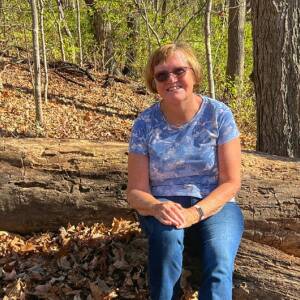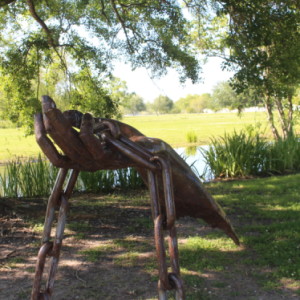The two faces of Plantation life
Saturday
This morning we visited the magnificent Oak Alley Plantation, famous for its double row of 28 live oak trees leading up to the main entrance, and matching in number the 28 Doric columns which surround the building. We started by watching a video on sugar cane cultivation, both then and now, which was very interesting and informative. Then we proceeded into the house for the guided tour, which explained much of the history and the succession of owners over the years, as well of something of the daily routine on the plantation. We went upstairs, and were able to go out on the balcony and admire the alley of trees from the house. When the tour was over, we enjoyed a mint julep sitting on the back courtyard, then we joined another tour, this time learning more of the striking trees in more detail. Finally we went to read the exhibits in the row of reconstructed slave cabins, before having lunch in the cafe.
After lunch we went on to the nearby Whitney Plantation, which is unique in presenting the story from the perspective of the enslaved. In 1999, the plantation was bought by a New Orleans lawyer named John Cummings, who spent the next 15 years, developing the property and investing $8 million of his personal money. On arriving, visitors receive a name tag, with a slave’s brief biography. The tour begins in the church - not original, it was moved here from somewhere else - where visitors come face to face with quite a number of slave children, some sitting on pews, some standing in the aisle, others sitting on the floor in a corner. The sculptures, made of red clay, were created by African American artist, Woodrow Nash, of Akron, Ohio, and are so realistic and moving. The tour continues to several memorials, etched with 107,00 names of Louisiana slaves, as well as pictures, and personal statements of former slaves, gathered as part of the Federal Writers' Project (FWP) of the Works Progress Administration, later renamed Work Projects Administration. In the Depression years between 1936 and 1938, the WPA Federal Writers' Project (FWP) sent out-of-work writers in seventeen states to interview ordinary people in order to write down their life stories. Another area, entitle Field of Angels, remembers child slaves - 40 perished on this property alone. The tour continues to the basic slave cabins, and finally, almost as an afterthought, the “Big House”. I found it a very moving and fitting tribute. My main blip is Oak Alley’s magnificent avenue of trees, and I have included photographs from the Whitney Plantation as extras.




Comments
Sign in or get an account to comment.


